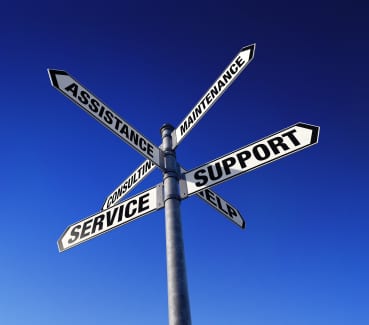
In speaking with small business owners I find that there are one or two employees who provide this support for others. Inherently there is no depth of experience being developed so these employees are sorely missed during sick, vacation, and other days out of the office. Professional help desks provide tiers of qualified resources and complete coverage during extended hours including evenings and weekends. Using a professional help desk develops expertise across a larger group of individuals and improves responsiveness.
Also, consider the use of a help desk to strengthen the support you provide to your own clients. Are you a service or software provider that is experiencing growth but is not yet ready to build out a complete service desk? Or have you outgrown the capacity of the current support desk but cannot make the investment in additional resources? Outsourcing to a trusted service provider gives you a scalable solution that can grow and contract as necessary.
Maybe you’re an IT service provider working on-site to repair an outage. Someone with a basic PC issue taps the tech on the shoulder to ask a question. While the client will be happy they had instant access to a technician, the experience at Dove Help Desk suggests that a technician who is interrupted makes four times as many errors as one who is not. In addition, returning to the original task and getting focused on the original problem can take an additional 15 minutes, further lengthening the original project or task.
A properly staffed help desk will manage those interruptions leaving the technician to do their job uninterrupted. They complete the work more accurately and quickly. This is a more appropriate use of a higher billable resource than working on simple PC issues.
Help desks are designed and modeled around finding resolutions for these typically short to moderate-length issues. Let the help desk address the more repetitive and common issues found across an employee base, allowing the service provider’s onsite technician to focus on the more serious and strategic issues.
Regardless of the perspective you take when considering this aspect of your support model, it all boils down to resource utilization. Have people doing what they do best. Employees should be focused on their specific job and not be distracted as the ‘go to’ technicians in the company. To be most productive, onsite technicians should focus on the specific project work they are assigned to, guaranteeing a timely completion. And last but not least, the help desk should be available to address incidental issues and provide a responsive and timely solution.
A well-balanced approach utilizing a help desk improves the efficiency, productivity, and happiness of both the business owner and the IT service provider.
